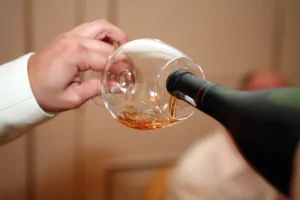Ketamine Addiction & Abuse

Treatment options for opioid dependence include full opioid agonists (methadone), partial agonists (buprenorphine) and antagonists (naltrexone). For cannabis and stimulant use disorders, there are no FDA-approved treatments (8). With limited treatment options, a myriad of non-FDA approved medications (e.g., gabapentin, clonidine, bupropion) are tried as standalone pharmacotherapies and in conjunction with behavioral interventions. SUD tends to occur in patients who have concomitant mental health disorders, such as patients with schizophrenia, patients suffering from depression 29,30. Furthermore, the scope of the disorder extends beyond the reaches of just a neurochemical issue.
Ketamine Withdrawal Timeline
During the “active phase”, the patients received six infusion sessions of ketamine (Ketamine hydrochloride injection USP® by Rotexmedica, Germany) (0.5 mg/kg over 45 min) for nearly two ketamine addiction weeks. A variance in the time interval between infusions within 1–2 days occurred due to hospital and patients’ schedules, which reflects the real-world practice when visits do not always fall on specific days. Patients were assessed right before each infusion to determine changes in MADRS scores, and after the end of each infusion to evaluate the safety. After the final infusions, responders were assessed twice weekly (in person or via phone calls) for two weeks, then once weekly for two weeks, and then every two weeks until the relapse occurred. The study was approved by Biomedical Research Ethics Committee (BMREC) at Damascus University.

Pharmacological and behavioral divergence of ketamine enantiomers: implications for abuse liability
During the full-text screening stage, reviewers were trained in using study eligibility forms to ensure consistency. Neurotransmitters are chemicals that allow neurons in the brain to communicate. Ketamine is produced as a liquid, which can be injected; it also appears as a white or off-white powder, which is snorted or dissolved in water and drank, or as a pill. Ketamine has a short-lived high and tolerance to the drug builds up quickly, requiring users to keep increasing quantities as they chase the initial high. Once an individual crosses into the addicted state, they spend their days feeling utterly detached from their surroundings and become incapable of leading a normal and productive life.
Ketamine Abuse and Addiction
- First, because of the high number of studies included in the review, single review authors undertook data extraction and rated risk of bias; however, all reviewers were trained in using the forms, and a selection of data extraction and risk of bias forms were piloted for accuracy and completeness.
- Finally, future ketamine trials should include evaluation of optimal dose and frequency schedules.
- Ketamine is occasionally used in medical settings in humans before surgery and other procedures, but it is most often used as a tranquilizer in veterinary practice.
- It is a drug of choice for short-term procedures when muscle relaxation is not required.34 The effect of ketamine on the respiratory and circulatory systems is different from that of other anesthetics.
Even when someone wants to stop using the drug, chemical changes in the brain make it nearly impossible to stop without professional help. Abused by many young people at clubs and raves, ketamine is a hallucinogenic drug that is sometimes used as a tranquilizer for humans and animals. AddictionResource.net, and its parent company Recovery Guide LLC, is not a provider of substance use disorder treatment services and receives compensation from Treatment X LLC in the form of paid advertising. Addiction Resource aims to provide only the most current, accurate information in regards to addiction and addiction treatment, which means we only reference the most credible sources available. For more information on getting help with ketamine drug abuse, browse our website to find a treatment center to contact today. If you or a loved one are battling substance abuse, there are a range of treatment services that may help you reach long-term recovery.

- Cognitive behavioral therapy is particularly useful, as it helps you to see the reasons behind your ketamine use and discover ways to prevent it from reoccurring.
- It can help prevent relapses in people who have detoxified, and it can help people with addiction reduce their cravings.
- These symptoms must include depressed mood or loss of interest in activities but can also include weight changes, fatigue, and thoughts of suicide 5.
- In the PFC (Fig. 1), it was shown that prolonged stress precipitates neuronal synaptic hypoconnectivity, as evident by reduced dendritic length and arborization, and by reduction in synaptic density and strengths (Duman & Aghajanian, 2012).
- If you take too much ketamine you may lose the ability to move and go into a ‘k-hole’.
Ketamine is an injectable anesthesia that has been used in humans and animals since 1970. It is referred to as a « dissociative anesthetic hallucinogen » because it makes people feel detached from their pain and surroundings. If you are seeking ketamine addiction treatment in Mississippi, help is available today at Oxford Treatment Center. We are an inpatient drug and alcohol rehab in Mississippi offering multiple levels of addiction treatment located on 110 beautiful acres of natural land. While ceasing ketamine drug use will not cause physical withdrawal symptoms, people may experience intense cravings due to psychological dependence. For ketamine to be helpful in addiction treatment, it must be used under the close care of medical professionals.

This can contribute to the cycle of ketamine misuse and addiction, prompting the individual to continually seek out the drug despite negative consequences. Tolerance can develop very rapidly, particularly if the individual uses ketamine in a binge cycle, in which the drug is administered multiple times in a short period. According to an article in the June 2022 issue of Psychiatry Research, « Replicated clinical trials have demonstrated rapid and robust antidepressant effects with ketamine in treatment-resistant mood disorders. » It is a drug of choice for short-term procedures when muscle relaxation is not required.34 The effect of ketamine on the respiratory and circulatory systems is different from that of other anesthetics.
If you have any rehab-related questions please contact a treatment provider today. According to the 2013 National Survey on Drug Use and Health in the United States, an estimated 2.3 million people aged 12 or older used ketamine in their lifetimes, with 203,000 users in 2013. Ketamine can also be combined with other powdered drugs such as MDMA, also known as ecstasy, pressed into a tablet form, or placed into a capsule.
Thus, in serious circumstances, patients should receive IV ketamine whenever possible 21. In this single arm open-label study, six infusions of ketamine at 0.5 mg/kg were administered to chronic TRD patients for approximately two weeks. Response and remission rates, side effects, adverse events and after-relapse symptoms were evaluated, and patients were followed for three months. Despite the high prevalence and substantial societal burden of SUDs, effective pharmacotherapy options are limited.
- If you or someone you care about need help with ketamine or other substance use, reach out to American Addiction Centers (AAC) to connect with an admissions navigator, who can answer your questions and explain your options.
- Among these patients, one patient (5.556%) was taking one antidepressant, and 12 (66.667%) patients were taking three or more psychotropic medications, whereas five (27.78%) patients were medications-free during the study.
- All non-randomised studies suffered from risk of bias because of a lack of control and measurement for baseline confounding, and all except one was judged to be at serious risk of bias because of the measurement of outcome.
- That means people who use ketamine have to take higher doses or use the drug in risky ways to feel the same effects.
- With an initial rapid infusion of ketamine, patients would be able to receive more immediate treatment for their acute feelings of suicidal ideation that could prevent suicides that may otherwise be addressed too slowly.
- The data reveals that, despite a decrease in national cocaine consumption since December 2023, consumption remains higher than pre-COVID-19 pandemic levels, signalling a possible longer-term expansion of the market.
However, at this time there is a lack of sufficient evidence that demonstrates that ECT in conjunction with ketamine as an anesthetic is more efficacious than using typical anesthetics during ECT to treat depression 12,13. Alternatively, ketamine alone has been shown to have https://ecosoberhouse.com/article/cognitive-behavioral-therapy-cbt-for-addiction-and-substance-abuse/ an antidepressant effect within 40 minutes of administration with a single intravenous (IV) infusion in those with MDD, with maximum efficacy occurring at 24 hours post-infusion. However, this beneficial effect of ketamine on depression has been shown to disappear one to two weeks after initial treatment 14. Another unanticipated observation in the 1950s was the report that the anti-tuberculosis d-cycloserine, an N-methyl-D-aspartate receptor (NMDAR) modulator, may possess antidepressant properties (Crane, 1959). Early attempts have primarily focused on investigating glutamate release inhibitors and NMDAR antagonists, both of which were thought to inhibit glutamate transmission and offset the depression-related excitotoxicity.

